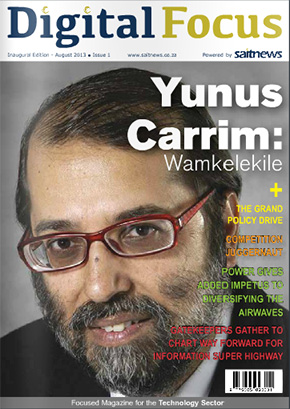Progress on Broadband Infraco national network
The state-owned enterprise, which has a budget of R3.1 billion over three years, is in the process of strengthening its cable to ensure its carrier grade status.
 Plessey says it has completed the building of installation sites for the northern ring of state-owned Broadband Infraco’s new national network.
Plessey says it has completed the building of installation sites for the northern ring of state-owned Broadband Infraco’s new national network.
Broadband Infraco is in the process of refurbishing 13 125 km of fibre optic cable as it works to expand its network to include metros and underserviced areas.
The state-owned enterprise, which has a budget of R3.1 billion over three years, is in the process of strengthening its cable to ensure its carrier grade status and so it can provide broadband services.
Having inherited optical fibre infrastructure from Transnet and Eskom, Broadband Infraco’s existing network now comprises of some 12 125 km of transmission routes. It uses the latest generation Dense Wavelength Division Multiplexing (DWDM) equipment, providing 2.5 and 10 gigabit capacity connections along the majority of the fibre routes.
However, these routes did not include some 1036 km of infrastructure needed to cover the outer reaches of Limpopo, Kwa-Zulu Natal, the Northern Cape, the Western Cape, and sites that would enable connectivity between South Africa and Zimbabwe, Namibia, Botswana, Swaziland, Lesotho, and Mozambique.
Broadband Infraco’s current network building operations are therefore designed to fill these gaps and, more often than not, involve development of greenfield transmission sites.
“We’ve done this kind of work on budget and in record times all over Africa. Also, our financial strength and established network of black economic empowerment (BEE) and small to medium enterprise (SME) suppliers means we have no financial or operational barriers to overcome before we start a project,” says Plessey client manager, public sector, Lawrence Rammupudu.
Broadband Infraco’s contract with Plessey included site surveys at both urban and rural locations along the northern ring (Limpopo, with connections to Zimbabwe), drawing up site specific designs and related health and safety plans, building access roads where necessary, installing security features at each site, laying concrete plinths to house technical equipment rooms, and installing ducts, manholes, and site finishes.
Plessey functioned as project manager, working closely with local vendors and suppliers to ensure that all the sites along the extended geographical area were tackled simultaneously, dramatically shortening the project time.










